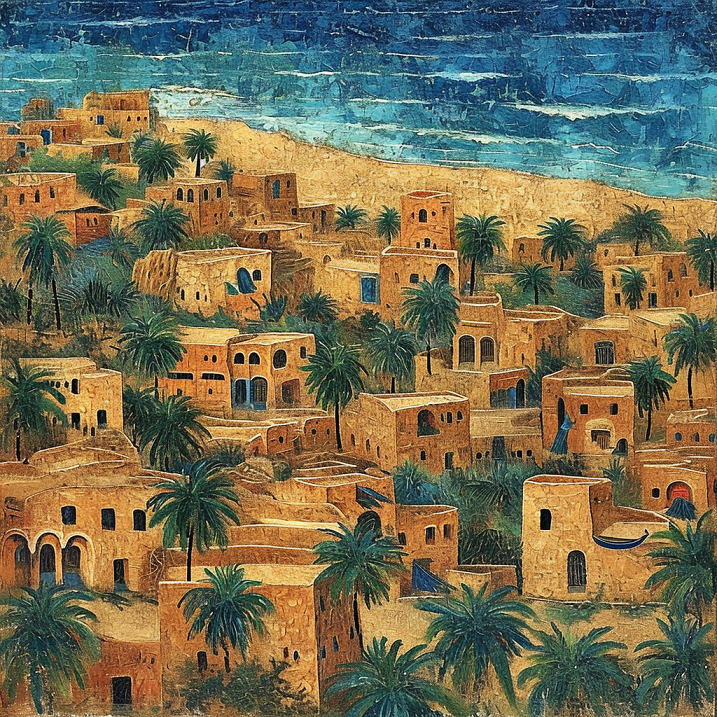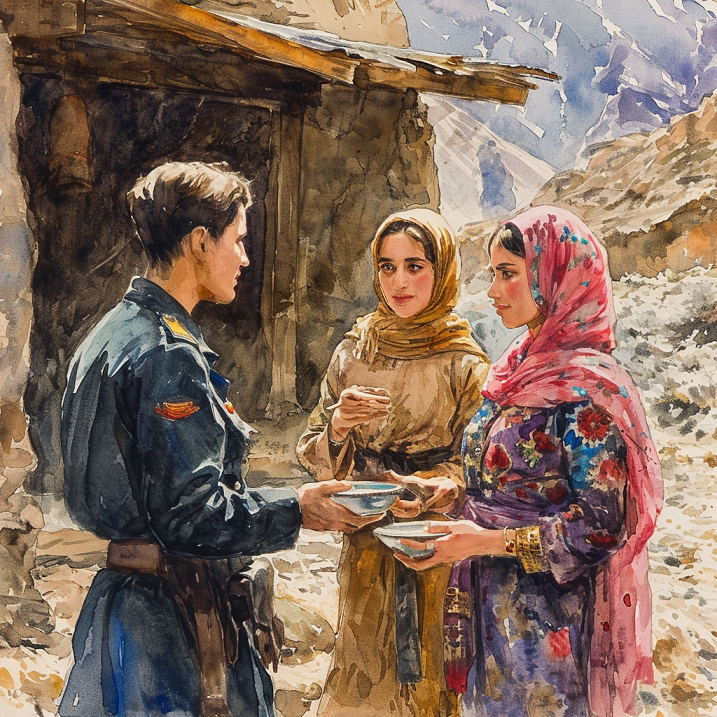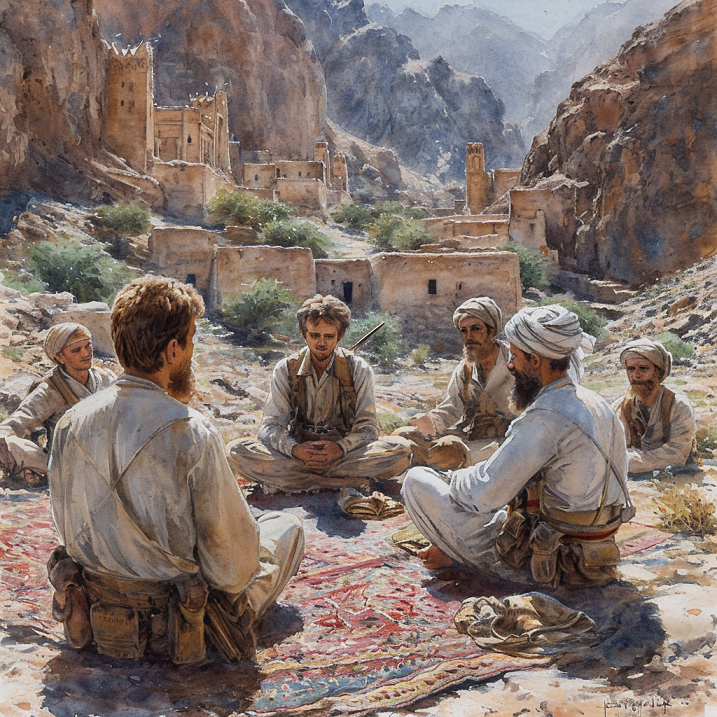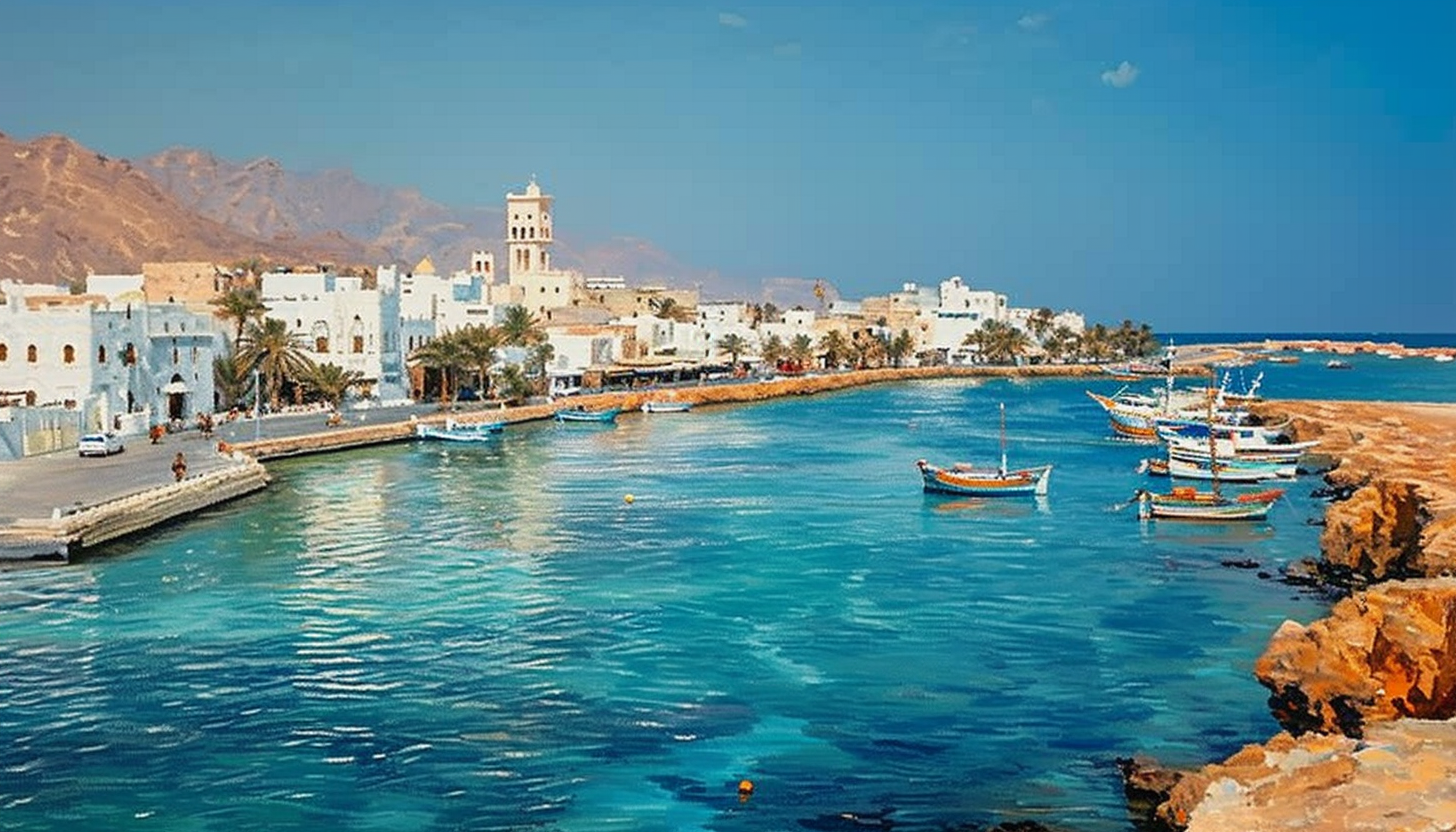James Wellsted recounts in his book, “Travels in Arabia” a journey from Muscat to Sur, marking the beginning of a remarkable chapter in his journey. This departure was an escape from the “insalubrious” climate of Muscat, which, at that time, proved particularly detrimental to European constitutions.
- James Wellsted’s journey from Maskat to Sur revealed the harsh climate and health challenges in the region.
- The Devil’s Gap squall highlighted the timidity of Arab mariners.
- Kilhat’s ancient ruins and gold coins indicated a rich historical legacy.
- Sur, a port town, was marked by its trade activities and date groves.
- The northern mountains offered insights into the lives of shepherds and their hospitality.
- Wellsted’s interaction with the Beni-Abu-Hasan Bedouins showcased the tribe’s simple lifestyle and inter-tribal tensions.
Wellsted’s observations in Muscat were grim, noting the significant daily death tolls, not only among Europeans but also the natives. This period was marked by a palpable sense of despair and urgency, illustrated by the plight of a Frenchman, a survivor of numerous adversities post the Turks’ defeat in the Assair country, now on the brink of death in a vessel adjacent to Wellsted’s.
A poor Frenchman who had fled here, after escaping a hundred dangers subsequent to the defeat of the Turks in the Assair country, was dying in a vessel along side of that which I had quitted, and a considerable number of the crew of an English ship lying there were seriously ill.
James Wellsted: Travels in Arabia
As Wellsted’s vessel navigated away from Muscat, it encountered the Devil’s Gap, a notable gorge along the mountain range adjacent to the sea. It was here that Wellsted witnessed a squall, a common but daunting challenge for seafarers. This experience also offered him a firsthand insight into the timidity and irresolution characteristic of Arab mariners. The mariners’ response to the squall, marked by a blend of fear and indecision, was a stark contrast to the stoicism often idealised in sailors’ tales. Their struggle during this heavy squall, where the boat was dangerously close to capsizing, underscored the unpredictable and treacherous nature of the sea.
The journey progressed towards Qalhat, an ancient town noted by several Arabian authors for its historical significance. Here, Wellsted’s passion for exploration was evident as he went ashore to examine the ruins. Amidst these ruins, which spanned an extensive area, only one building – a small mosque – stood in relatively good preservation. This mosque, frequented by Indian “Mussulmans”, was adorned with colorful glazed tiles, bearing sentences from the Koran in relief, suggesting a confluence of cultures and religious practices over time.
Wellsted’s arrival at Sur just after sunset marked the end of this initial leg of his journey. His description of the mountain ranges – Jebel Syenne and Rackee – approaching close to the sea, and the valleys filled with streams of fresh water near the date palm groves, painted a vivid picture of the region’s topography. The juxtaposition of the fertile valleys against the backdrop of towering mountains provided a glimpse into the diverse and complex landscape that characterises much of Arabia.
Sur: A Glimpse into Omani Life and Commerce
Upon his arrival in Sur, Wellsted was greeted by the Sheikh of the town, a gesture reflecting the hospitality deeply ingrained in Arabian culture. The breakfast they shared, simple yet emblematic of the region’s produce – dates and milk – set the tone for Wellsted’s exploration of the town.
Sur, described as a port of the district of Ja’ilan, presented a stark landscape: a low sandy shore, devoid of vegetation or trees, lined with huts constructed from date palm branches. These dwellings, despite their simplicity, were noted for their compact and airy design, with the cleanliness of the streets lending a neat and pleasing aspect to the town.
The absence of shops in Sur, with the bazaar located about a mile and a half from the beach, indicated a separation of commercial and residential spaces. Wellsted’s journey to this bazaar was marked by the remarkable hospitality shown to him – his tent was pitched in a delightful spot with guards appointed for the safety of his belongings, a testament to the respect and consideration extended to him as a visitor.

Sur’s economy was largely driven by commerce, supported by its favourable harbour. The town, although modest in its own exports and imports – primarily dates and salt fish, and grain and cloth respectively – played a significant role in the regional trade network. Wellsted highlighted the significant involvement of the Banians and Cutchis ( from Gujarat, India), who controlled a considerable share of this trade. The presence of a large fort, though in a ruinous state, was indicative of Sur’s historical importance and its strategic position in maritime trade routes.
Exploration of Oman’s Northern Mountain Range
Wellsted embarked on an expedition to the northern range of mountains, a journey that revealed the rugged and natural beauty of the Arabian landscape. Inaccessible to horses, this trek required a shift to the more sure-footed asses, which carried Wellsted and his guide briskly to the mountain’s base. The ascent was arduous, involving climbing in many places rather than walking. This physical challenge was punctuated by a brief respite near a small hamlet, where Wellsted quenched his thirst with water from a pure stream, symbolizing the life-sustaining natural resources hidden in these harsh landscapes.
Reaching the summit, Wellsted was greeted not by monumental sights but by a stark, barren terrain. Despite the lack of dramatic vistas, the coolness of the atmosphere and the panoramic view of the surrounding country offered a sense of accomplishment and awe. The area, named Futlah, was dotted with limestone rock and home to the Beni Khaled and Beni Dawud tribes. Wellsted’s interaction with the shepherds in this region provided a fascinating insight into the lives of these mountain dwellers.
An invitation to the shepherds’ huts revealed dwellings of a simple, circular form, constructed with loose stones and thatched roofs. The modest interiors of these huts reflected a life attuned to the harsh mountain environment. The warmth of the shepherds extended to the sharing of a meal, highlighting the region’s reliance on basic sustenance like dates and milk. Wellsted’s encounter with the young females of the group, who were keen to ensure he enjoyed their offering of milk, provided a charming and humanizing moment in his narrative.
I had scarcely seated myself on a skin, …when some young and very pretty females entered, bringing with them a Huge bowl of milk. Out of compliment to them I took a long draught ; but no, this was insufficient. Was it bad ? try again, and again ! In vain I extolled it to the skies ; I was not permitted to desist until I had swelled almost to suffocation…They were then delighted, and we became such excellent friends that, with the assistance of a few presents and some fair speeches, we parted with expressions of mutual regret.
James Wellsted: Travels in Arabia

The return journey was as challenging as the ascent, with a path even steeper and more rugged. The absence of donkeys for the return leg and the ensuing difficulties – losing the path in the dark and rain – added to the sense of adventure and unpredictability that characterised Wellsted’s travels.
Insights into Local Life and Political Dynamics
During his stay, Wellsted received a characteristically warm and hospitable epistle from Imam Sayyid “Sooltan”, the ruler of the region. This letter, written in a tone of respect and affection, highlighted the Imam’s appreciation for Wellsted’s visit and his eagerness to assist in any way possible.
During my stay here,I received the following friendly and characteristic epistle from his Highness, the Imam :”In the name of God, most merciful, from Sayyid the Sooltan to his Excellency, the esteemed, respected, beloved, the perfect Captain Wellsted, from the eastern government, peace be with you from the Most High God ;and, after that your letter reached us, which was a proof of your love in remembering us, we greatly rejoiced at your arriving at Sir,and your departure for Ja’ilan, which is as we directed it, and from thence to Semmed, and which was gratifying to you, and, therefore, pleasing to us; and, furthermore, anything which you require from us, whether little or much, it is only for you to request it, and it is on our part to grant it. Peace be to you, and farewell.”
True,
“Sayyid Sooltan.”
James Wellsted: Travels in Arabia
Wellsted’s journey continued with the collection of camels and guides, marking the commencement of another leg of his Arabian exploration. The terrain he traversed was a mixture of loose sand and clay, dotted with acacia bushes – a testament to the varied and challenging landscape of the region. His encounter with Bedouin tribes along the way offered an intriguing glimpse into their nomadic lifestyle, characterised by constant movement and a deep connection with the land.
The pass of Babel Rufsur stood out as a significant landmark in Wellsted’s journey. Here, the presence of a small tower and artillery, despite their state of decay, pointed to historical conflicts and the strategic importance of this location in times past. The existence of these structures, originally erected to defend against Wahhabi incursions, spoke volumes about the region’s tumultuous history and the continuous struggle for power and control.
As Wellsted ventured further, he observed the interactions and dynamics of the local tribes. The authority of Sayyid S’aid, though acknowledged, seemed more symbolic than practical. The Bedouins pursued their own disputes and feuds with little regard for central authority, underlining the complex and fragmented political landscape of Arabia. The daily occurrences of plunder and violence among the tribes were a stark reminder of the lawlessness and autonomy that characterised much of the region.
Wellsted’s arrival amidst the Beni-Abu-Hasan Bedouins brought him face-to-face with yet another facet of Arabian society. Their huts, erected beneath date groves and spread out over a large area, reflected a lifestyle deeply intertwined with the environment. The Bedouins’ curiosity and astonishment at Wellsted’s presence, leading to an almost overwhelming interaction, showcased the isolation and simplicity of their lives. Their reaction to a foreign visitor was a blend of incredulity and excitement, a clear indication of their limited exposure to the outside world.
Encounters in Beni-Abu-Hasan Territory
Wellsted’s journey into the territory of the Beni-Abu-Hasan Bedouins revealed the complex and often harsh realities of life in the Arabian hinterlands. The Beni-Abu-Hasan, estimated to number around one thousand two hundred excluding women and children, presented a society that was starkly different from the coastal communities Wellsted had encountered earlier. Their primary occupation was the tending of date trees, a task that occupied only a fraction of their time, leaving them largely to a life of idleness interspersed with internal quarrels and disputes with neighbouring tribes.
The physical appearance of the Beni-Abu-Hasan people, with their near-nakedness and waist-long hair, struck Wellsted as particularly wild and untamed. This visual representation was a vivid indicator of the cultural and environmental adaptation of the tribe, set in stark contrast to the more urbanized societies Wellsted had previously described. The evening interaction with the Sheikh of the Beni-Abu-Hasan tribe further illuminated the complex tribal dynamics of the region. The Sheikh’s attempts to dissuade Wellsted from visiting the Beni-Abu-‘Ali Bedouins, whom he described as “perfect devils” and disaffected towards Sayyid S’aid and the English, was telling of the inter-tribal tensions and the cautious, sometimes hostile attitude towards outsiders.

James Wellsted’s journey across Arabia crafts a vibrant mosaic of Oman’s varied terrains and cultures. His descriptions range from the coastal vibrancy of Sur to the stark authenticity of the Beni-Abu-Hasan Bedouins, encapsulating the quintessence of Arabian existence in the 19th century. His experiences, characterized by warmth and wariness, underscore the delicate interplay between steadfast traditions and evolving lifestyles. Wellsted’s meticulous attention to detail provides a perpetual glimpse into the soul of Arabia, its inhabitants, and their perpetual resilience. This account stands as a cornerstone in Omani travel literature, capturing the complex beauty of a land caught between the tides of change and the anchors of its heritage.
Q: What was the primary reason for Wellsted’s departure from Maskat?
A: Wellsted left Maskat due to its unfavourable climate and high death rates.
Q: How did Wellsted describe the Arab mariners’ reaction to the squall at Devil’s Gap?
A: He observed their timidity and indecision during the squall.
Q: What historical significance does Kilhat hold?
A: Kilhat is known for its ancient ruins and valuable gold coins.
Q: What characterizes the town of Sur?
A: Sur is distinguished by its commercial activities and extensive date groves.
Q: What did Wellsted encounter in the northern mountains?
A: He met Arab shepherds, experiencing their hospitality and simple lifestyle.
Q: What insights did Wellsted gain about the Beni-Abu-Hasan tribe?
A: He noted their simple, idle life and involvement in tribal disputes.
Q: How does Wellsted’s narrative contribute to our understanding of 19th-century Arabia?
A: It offers a detailed perspective on the diversity and complexity of Arabian life.

